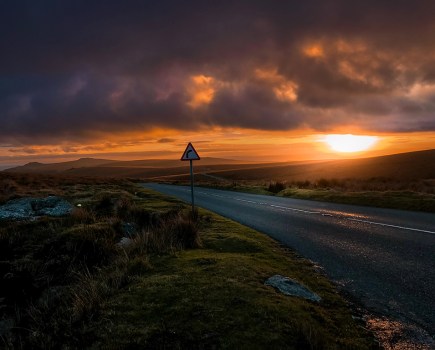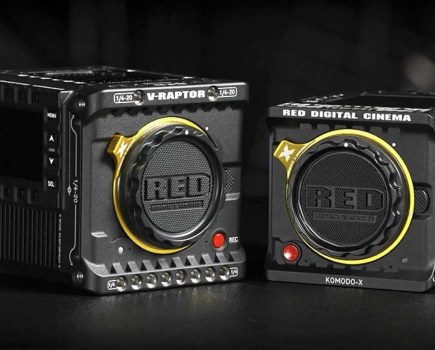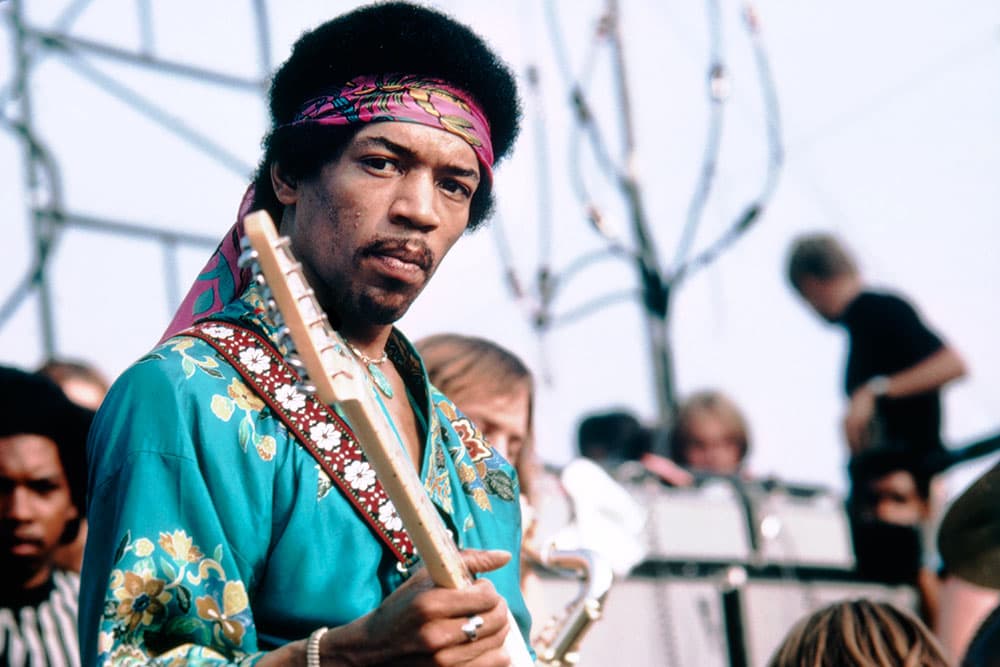
Jimi Hendrix on stage at the Newport Festival in 1969.
Speaking on his satellite phone from somewhere in the middle of a Californian desert, Ed Caraeff is on fine form. The former photographer and art director, who later switched careers to become a chef, now lives out of a vintage VW camper van and travels across the US on his self-styled ‘bucket list trip’ (partly funded by selling his photography archive in 2015). His photography career began in 1965 during his high school days, in what he describes as ‘the age of innocence’, when his charm and a few crucial connections led to him photographing many of music’s biggest stars…
Ed began taking photography classes because his first female teacher was ‘hot’, but he quickly became hooked on the art. ‘I was kind of intrigued by the concept of photography; there being a light-sensitive material, changing focus, aperture and sensitivity – I liked all of that.’
At the time, Ed was using a plastic Instamatic roll film camera and reveals, ‘I transferred during a semester to a school that my parents thought was better. It turned out it was right near to Los Angeles International Airport [LAX], which would later play a huge part in me having a career in photography.’
Ed’s mentor, and his friend to this day, was his teacher Mr Meade. ‘He had a darkroom, and everything really kicked into gear during the two semesters I took photography with Mr Meade. Not only did he teach me all of the darkroom skills, but he also in let me skip other classes so I could go into the darkroom. He gave me complete freedom and never told on me.’
Starting out with The Seeds
The proximity of Ed’s new high school to LAX meant he could skip out of school at lunchtimes to shoot. ‘My first encounter was going to the airport, when The Seeds were coming back and going down to the gate. As they came in, I took photos of them signing autographs. A woman from their record company tapped me on the shoulder, gave me her business card and said, “If those come out, I’d like to see them.” The card said Sunset Boulevard Crescendo Records. This was about noon during the school day and the next day I was in her office with mounted prints in a cardboard box.’
Ed continues, ‘I had already developed, proofed and edited them – that’s the art director in me. I immediately started looking and thinking of cropping and of combining negatives; could I put two negatives together and create a neat shot? I was also into distorting the easel – I would always put something under the easel to get a little distortion going on and then maybe crop it so you wouldn’t know it was distorted.’
The airport photos of The Seeds didn’t sell, because two days later the group signed with a new manager and had their hair cut. But the band was performing within days in Hollywood. Ed explains, ‘I went to the show that weekend and used the woman’s [record company] business card to walk in – in those days you could do that. The Seeds got mobbed onstage; I walked up there and took some photos and that’s how it started.’

Soul superstar Marvin Gaye photographed in Van Nuys, Los Angeles, in 1976
Darkroom fanatic
From his high school days onwards, Ed was fanatical about working in darkrooms. He admits, ‘I wasn’t real chummy with all the other photographers, but what stands out is how it’s rare to find any photographer who developed his own black & white film, made his own contact sheets and did his own enlargements. Then I also did pretty much the same thing with colour except, of course, when I shot with Kodachrome.’
His first darkroom was in his bathroom in the family home, but Ed’s parents soon realised how serious he was about photography and had a bespoke darkroom built for him above a two-car garage. He explains, ‘I painted everything black and the sink was custom-made with surfboard wax. I had a vent and I had my eight-track music system up there. By then I had upgraded to a better Beseler enlarger on a custom-built table where the table base would go up and down so I could make huge enlargements.’
Ed admits, ‘I love the darkroom, the importance of the darkroom as a creative tool and as a way to set your standard. My prints were always done on Ilford [paper] and I had to have black blacks and white whites, and all of the tone in between – I was really particular about all that kind of stuff.’
He adds, ‘As soon as I had my own house I had a custom darkroom, where a lot of groups would come and sit on the chair and watch me work. I was doing multiple-image Cibachrome prints. For design I would do graphics that looked like neon or lettering, and I would print that onto the Cibachrome paper with my photography to create unique, one-of-a-kind, Cibachrome prints, which later would become album covers’.
As his career progressed, Ed invested in more equipment. ‘I knew exactly what I wanted. My first camera was a black Nikon F, and soon after that I added the optional sports finder so I could wear my glasses and hold it a little bit away from my glasses. In years to come I’d have Hasselblads… it evolved and I even had an 8x10in camera. My best investment ever was the Minolta Spotmeter. With the Minolta Spotmeter I could be back in the crowd and just aim it at the lead singer’s face and get a reading. I just lived by that.’
Inspiration and record covers
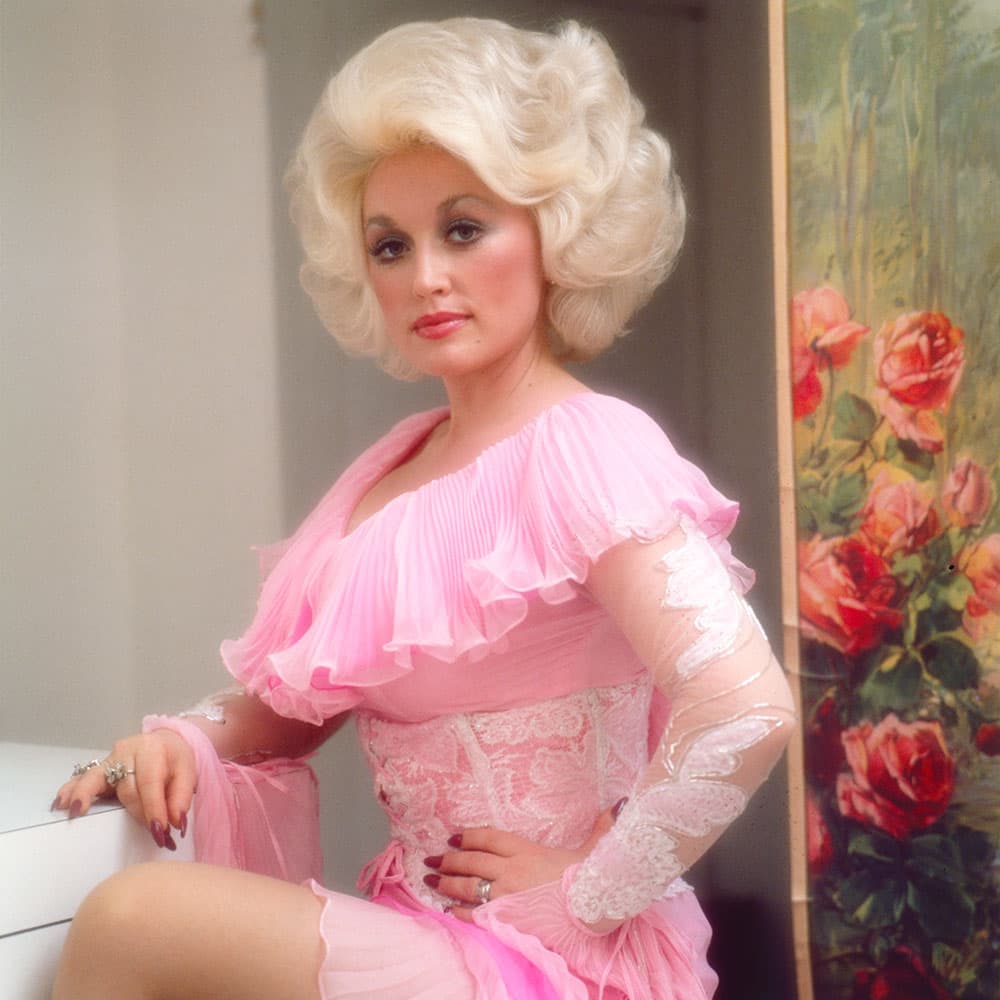
Country music legend Dolly Parton pictured during the shoot for her 1978 album Heartbreaker
Ed cites his main creative inspiration as the Belgian surrealist artist René Magritte, and adds, ‘I liked Duane Michals, who I think actually photographed Magritte, who would do lots of little sequences [of pictures] and blurred motion things; I really liked that.’
Ed’s subsequent work as an art director on record covers mainly evolved out of his relationships with musicians. ‘Basically, my clients were the artists. I did have some record companies like Elektra [as clients] but the majority were the artists themselves who would contact me. I had an unlisted phone number, no portfolio, no business card, no agent and no promotion, but I had all the work I could do for 14 years.’
He notes, ‘Being into the darkroom and lighting gave me more control and let me tell the story or [decide] what made them [the artists] look better or made the album cover more dramatic. Being able to take it all the way through just made it pop and stand out more.’
In total, Ed worked on creating around 300 album covers for musicians such as Carly Simon, Creedence Clearwater Revival, Frank Zappa, Bread, Tim Buckley, Tom Waits, The Bee Gees, Judy Collins and many more. He names Dolly Parton, Neil Diamond and Elton John as the favourite artists he worked with, but somewhat modestly states, ‘I was usually forced upon the record companies and they’d tolerate me!’
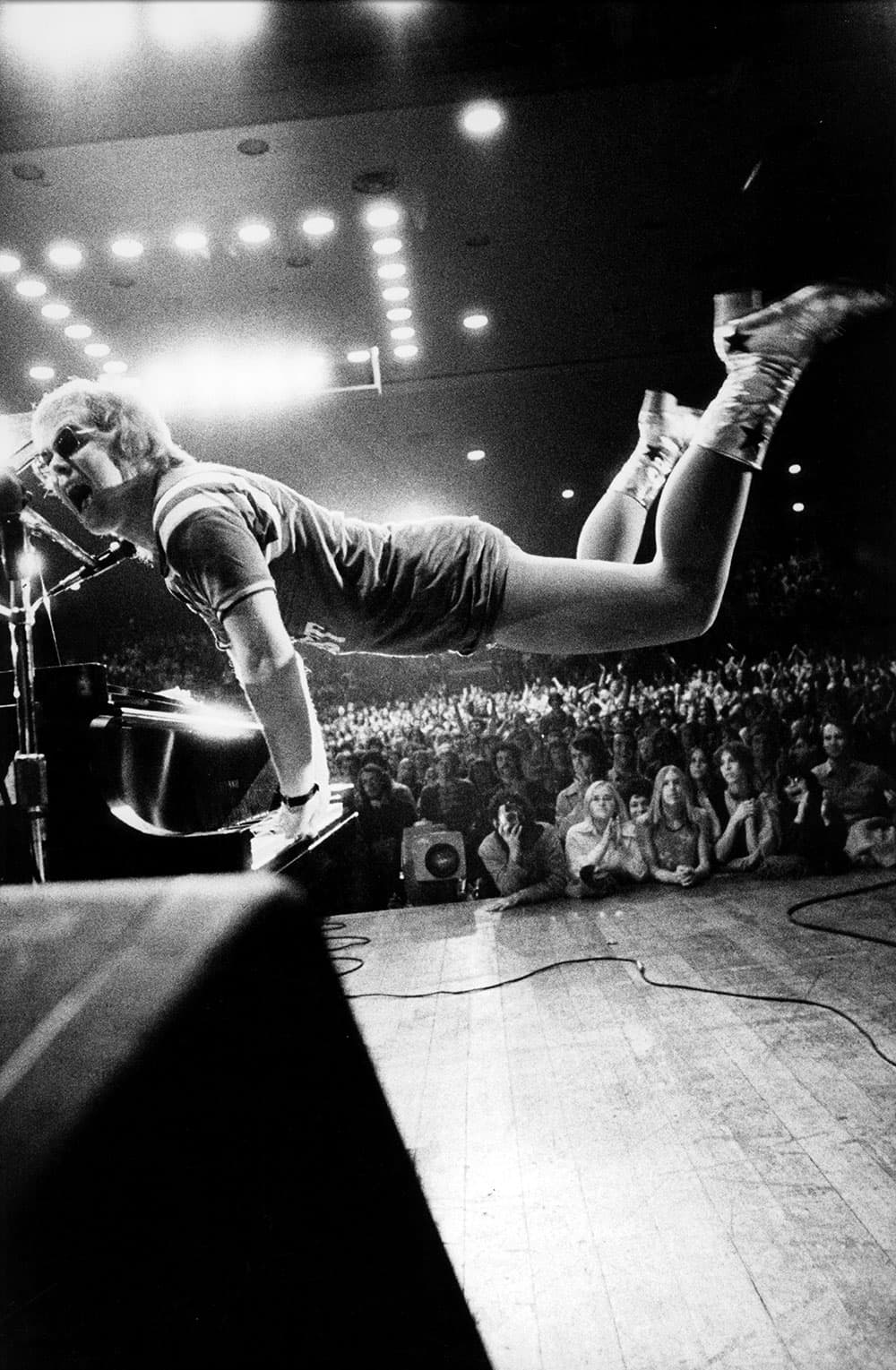
Elton John performing in the US in the early 1970s. Ed Caraeff still keeps in touch with Elton to this day
Working with Hendrix
Ed’s latest book, Burning Desire: The Jimi Hendrix Experience through the lens of Ed Caraeff, features dozens of images shot between 1967 and 1969, but he knew little of Hendrix initially. ‘The first time I saw Jimi Hendrix was when he walked out in front of me at the Monterey Pop Festival and I was standing at the edge of the stage. The stage was right up in my chest and my back was to the crowd. I was about five feet from Jimi Hendrix and I was higher up than anybody because I was standing on a folding chair. That was the performance where I took the burning guitar shot.’
Ed admits, ‘I was alerted before his performance by another photographer, from Germany, down in the photography pit. He asked me if I knew about Jimi Hendrix; I said no, and he said, “Save some film for this Jimi Hendrix cat, he’s real wild.” So that’s all I knew.’
He continues, ‘At that show I had one camera and it belonged to a friend of our family, Oscar, who was an optometrist. He had been following my good grades in high school – I was an A-grade photography student – so he let me use his new Voigtländer camera. That’s what I took to Monterey… a borrowed Voigtländer camera in a nice leather case.’

A colourised version of Ed Caraeff’s famous Jimi Hendrix ‘burning guitar shot’, taken at the Monterey Pop Festival in 1967
Although it’s now iconic, the Hendrix burning guitar shot didn’t take off for two decades. Ed explains, ‘In 1987, when I was working as a chef, I was contacted by the owner of Rolling Stone magazine, Jann Wenner. He told me he wanted to use my burning guitar shot on the cover of Rolling Stone and he also wanted to colourise it – he asked for my permission and I let him do it. After he put it on the cover in 1987, to commemorate the best live shows of all time, it became a very popular shot. It was no big deal until then.’
The new Hendrix book is packed with stunning photographs, including some of fans in a swimming pool just inches from the stage at the Hollywood Bowl. Ed recalls, ‘What a strange thing! Never did we imagine that people would jump in it to try to reach somebody. That was pretty crazy. It was very tense up there for a few minutes because even I could figure out that with all those wires and electricity it didn’t seem like a good idea.’
Ed’s infectious laugh comes down the phone line and he reveals, ‘I’m telling people it’s basically every photograph of Jimi Hendrix I took in the book. But it’s cool and I’m glad if people are interested.’
He ruminates and says, ‘I think the magic of what I did was the darkroom part of it. Nowadays, photographers will just go and transmit their photos after the show from the lobby and they’re gone, but I edited my stuff. I can’t even remember when anybody went through my contact sheets with a loupe – I always did that. I did the edit, I took the shots, I did the crops and I made the prints that you saw. The photography is just a means to an end; it just helped me with what I wanted to say or show.’
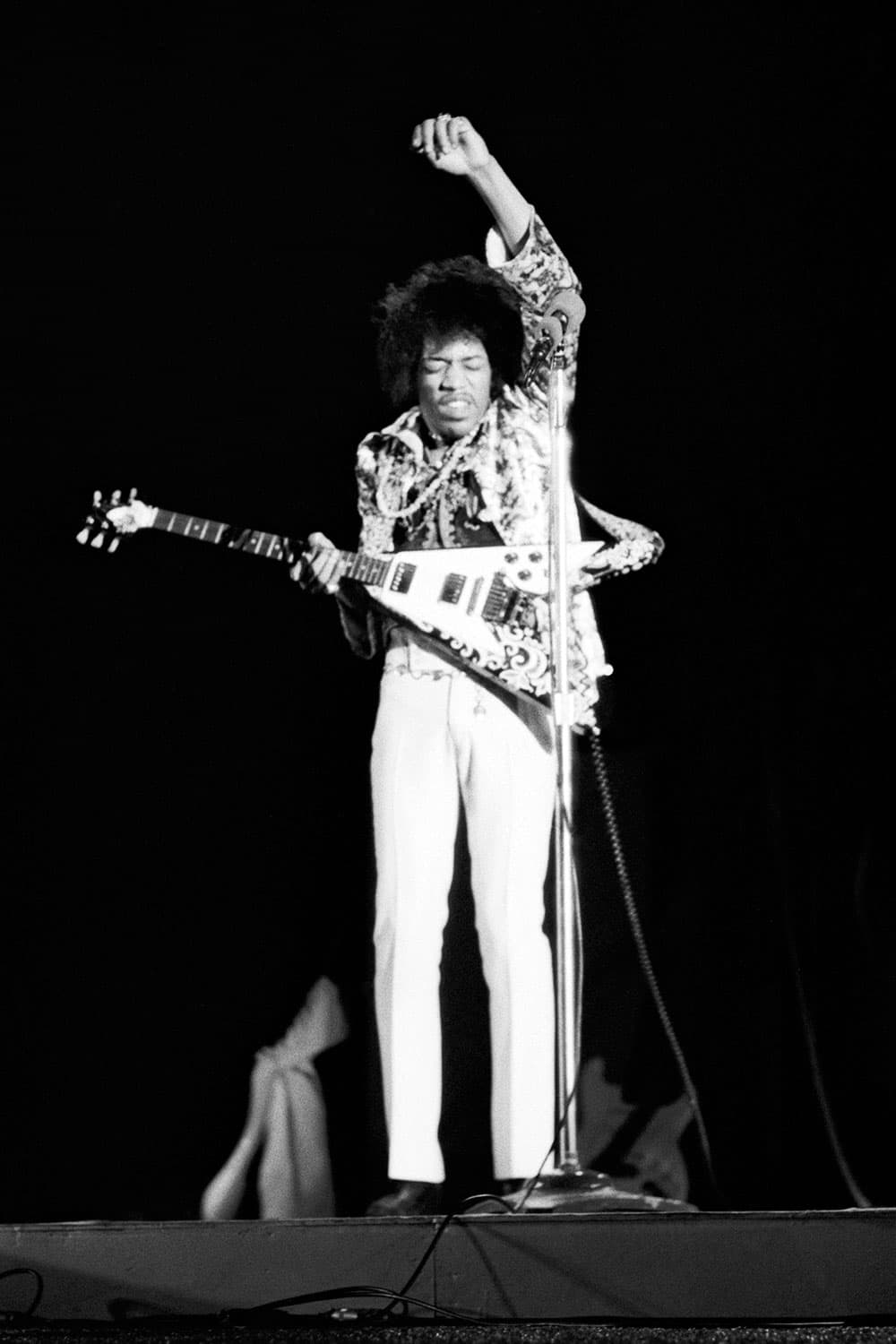
Jimi Hendrix playing live at the Hollywood Bowl in 1967
Read all about it
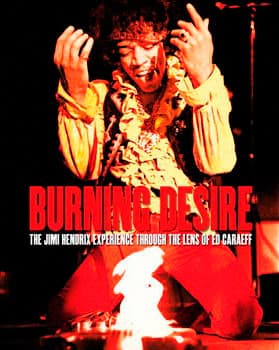
The book Burning Desire: The Jimi Hendrix Experience through the lens of Ed Caraeff (ISBN 978-1-85149-8345) is published by ACC Editions, RRP £29.95. In words and Ed’s photographs, it documents the live performances and life of guitar legend Jimi Hendrix between 1967 and 1969. To find out more, visit www.accartbooks.com.
Ed Caraeff is a music photographer and art director who has designed around 300 album covers. He switched careers to become a chef in 1980 and now travels the US in a VW camper van. Visit www.iconicimages.net or follow him on Instagram at @thebucketlisttrip





